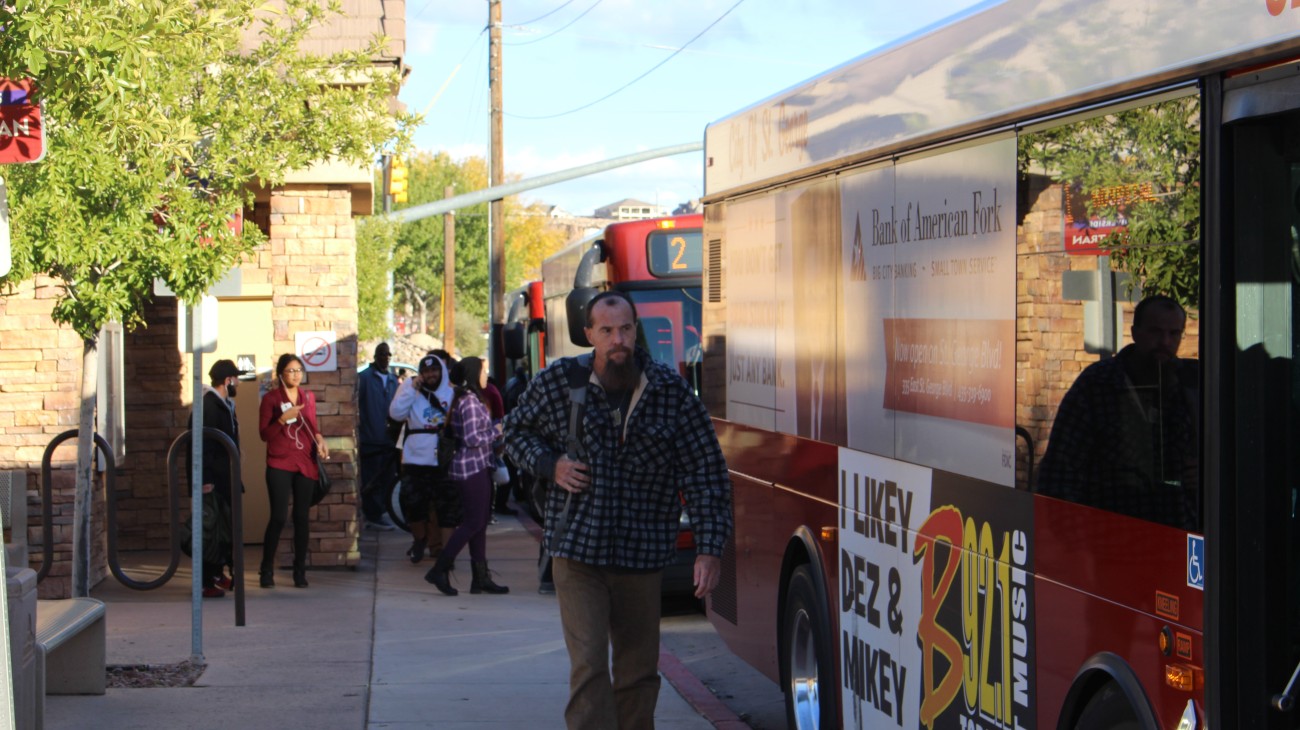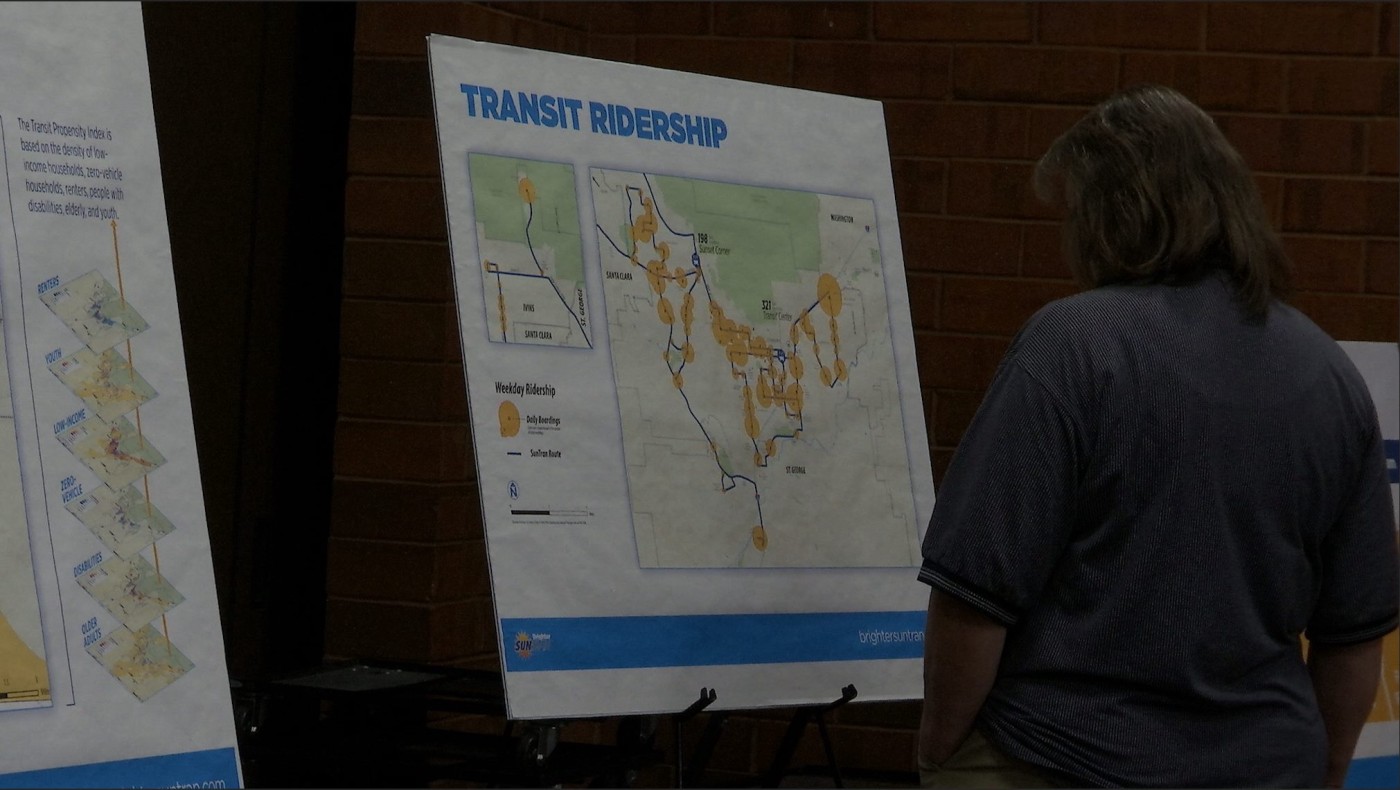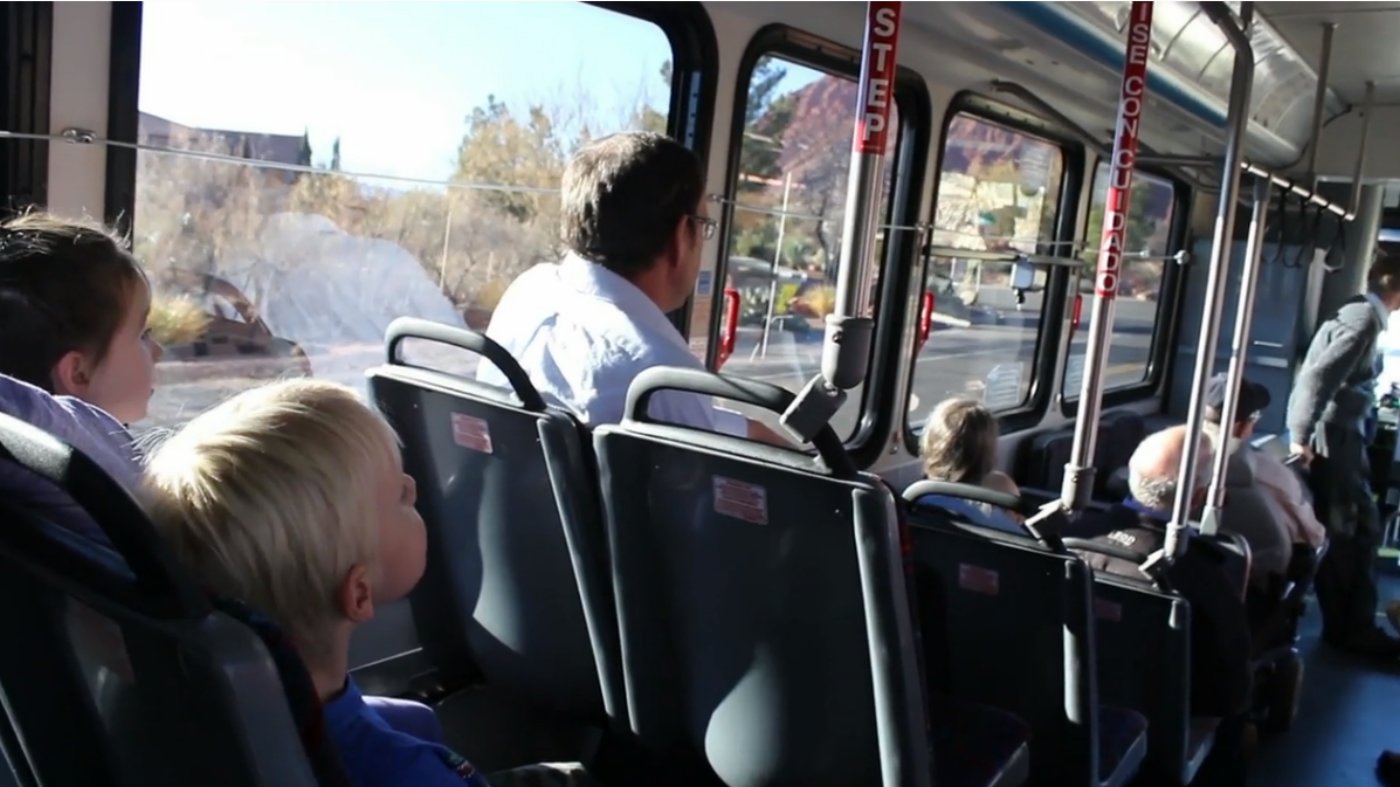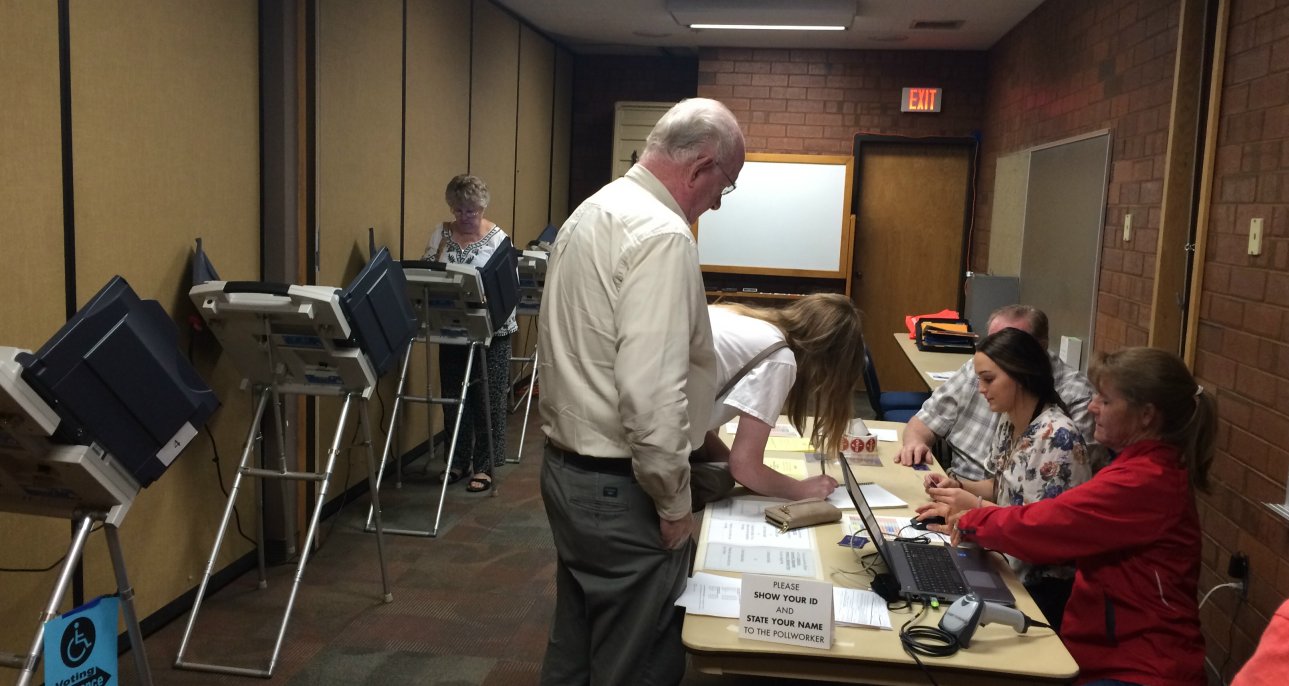ST. GEORGE – City officials were presented with proposed ways to streamline and improve SunTran bus service Thursday. Implementation of the transit overhaul could begin next year, yet will be subject to whether or not a proposed sales tax geared to fund transportation needs goes through this fall.
The City Council was presented with the results of a study called “Brighter SunTran” from consultants who had been examining ways to improve the city’s transit service since February.

The transit service hosts about 500,000 rides a year and has become increasingly popular with residents since its inception in 2003.
Facets of the study involved analysis of travel times, how many stops and transfers were used by riders, market studies, rider and stakeholder interviews, an online survey hosted on BrighterSuntran.com and public meetings.
Overall, results showed a high-level of satisfaction among SunTran users, said Thomas Wittmann of the Nelson/Nygaard consulting firm. The service is also highly-valued by the community, he said.
“It’s good. You’ve got a good service,” Wittmann said before outlining the current challenges inherent in the bus service.
SunTran currently has six bus routes that crisscross much of St. George and stretch into Ivins, Bloomington, and just short of Washington City with a stop at Deseret Industries. These routes are 40- to 80-minute one-way loops. Having to sit through those loops to get to or from a specific destination can take up a lot of time, particularly if a rider has to transfer onto one or more bus routes along the way.

Proposed changes to the routes involve eliminating the loops as much as possible by creating bilateral routes. Other changes would include the removal of little-used stops along bus routes. These changes are anticipated to reduce travel time to between 30 and 60 minutes.
Other elements of a preferred plan gained through public engagement include a route to the Bloomintgon Wal-Mart from the Transit Center on 100 South and the central part of the city. Another requested route would run from the Transit Center to Sunset Boulevard.
Of SunTran’s existing riders, 75 percent would benefit from the new 30-minute routes, with up to 97 percent being placed within a SunTran bus stop.
Wittman said the changes would likely result in increased ridership while putting SunTran in a better position for expansion in the future.

The 3 percent that would be negatively effected by the route changes and elimination of certain bus stops were not lost on the mind of Fred Davies, the city’s transit manager. He said that 3 percent should be taken care of somehow. That would have to be a topic for another discussion of the proposed overall move forward.
Among other priorities SunTran riders and stakeholders listed during the study were requests for buses to run on Sunday, expansion into the Sun River community, and above all else, a route into Washington City.
“The single biggest thing we heard was expansion into Washington City,” Wittman said. “It’s one of the top priorities of SunTran riders.”
St. George and Washington City officials have been working together over the last couple of years to expand the service into Washington City. Though it has yet to materialize, it remains a much requested service from residents of both cities.
The cost of providing service on Sunday and the creation of a new route are not inexpensive prospects.

It could cost the city as much as $440,000 to get at least four routes running on Sundays. Implementing a new bus route can cost well over $200,000, with the accompanying bus running over $400,000. Though federal grants help offset between 50 and 80 percent of those costs, it can still be a pricey venture for any city to undertake.
Expanding service an additional day or adding a new route may be feasible depending upon what happens to a ballot initiative proposing a quarter-cent sales tax slated for county and municipal transportation needs, St. George Mayor Jon Pike said.
The Washington County Commission has yet to make any official decision to place the initiative on the ballot this November. And even then, there’s no telling which way the voters will go.
If the initiative gets on the ballots and is voted through by county residents, St. George could receive up to $1.4 million annually for transportation and road infrastructure needs. Another $1.6 million could be available to the city’s public transit system.
“It’s critical to see what happens this fall,” City Manager Gary Esplin said.
Email: [email protected]
Twitter: @MoriKessler
Copyright St. George News, SaintGeorgeUtah.com LLC, 2016, all rights reserved.
People should remember that our state legislators have been shifting transportation money to water projects such as the unnecessary Lake Powell Pipeline. As of 2015 state leaders gave local leaders the ability to make Washington County taxpayers pay more at the pump for local taxes to support road work and efforts such as public transportation. This was in addition to raising the state gasoline tax, too. Our county needs better public transportation, but it’s very disappointing to many of us that leaders would be taking transportation money away and then asking citizens to backfill with more tax money. They’re undoubtedly hoping that citizens aren’t paying attention because these moves happen over several years so they can hide their activities from those who don’t pay close attention to this little game. And, don’t forget the $53 million they’ve been trying to use for a coal port in CA!
beacon has been watching two many Inspector Gadget reruns ! LMAO